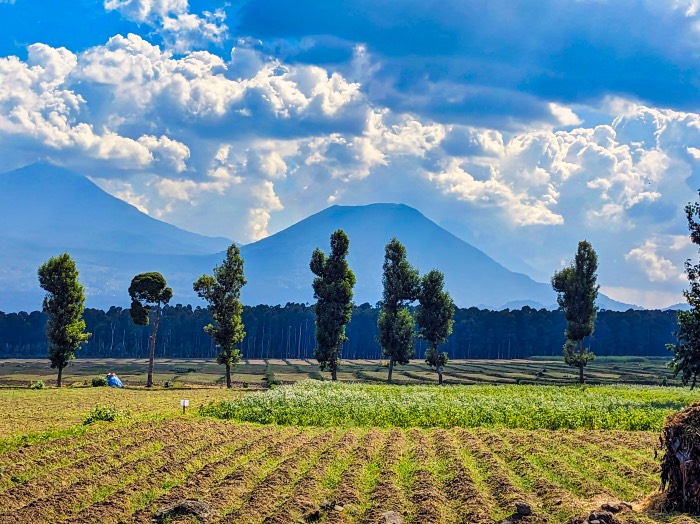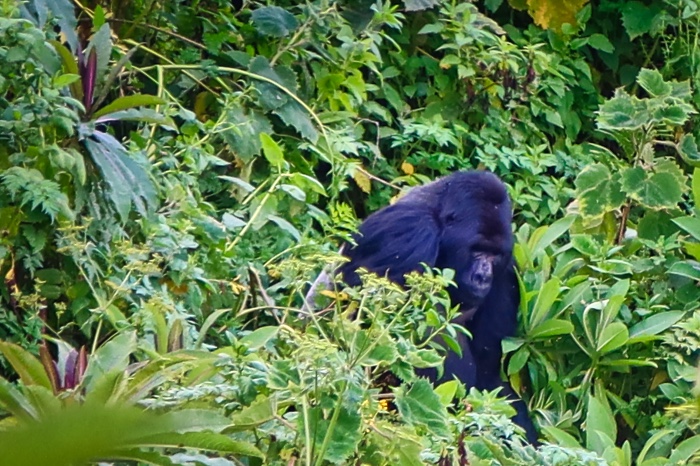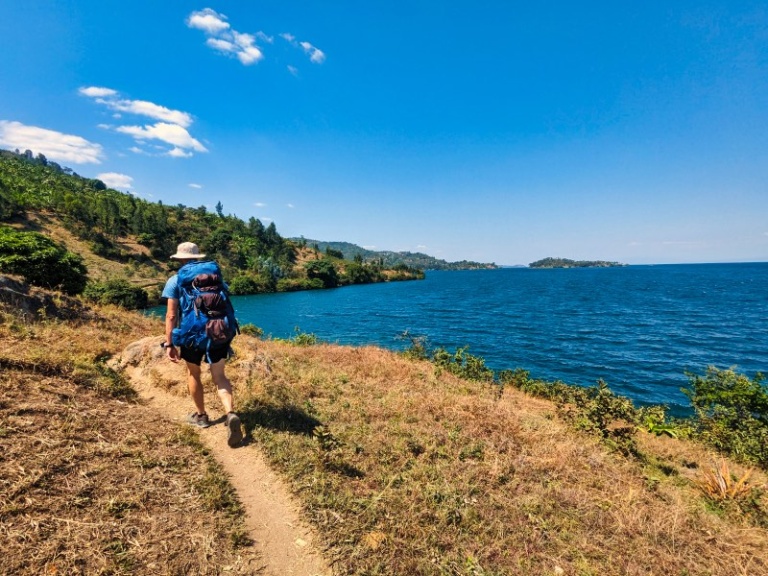Mount Bisoke: Everything You Need to Know
Visiting Rwanda and looking to explore the great outdoors? Keen to spot gorillas in the wild but don’t feel like breaking the bank? (Can’t say we blame you!)
Look no further, you’ve come to the right place. Read on for everything you need to know about hiking Rwanda’s Mount Bisoke.
Rwanda Travel Resources
- Getting there: search for flights to Rwanda
- Where to stay: find a guesthouse, hostel or hotel
- Guidebook: pick up a copy of Bradt’s Rwanda
- How to get around: rent a car or 4WD
- Travel insurance: get travel insurance for your trip
- Money: get a Wise travel card to save big time in Rwanda
- Gear: pick up a Steripen for clean water 24/7
Mount Bisoke: Overview
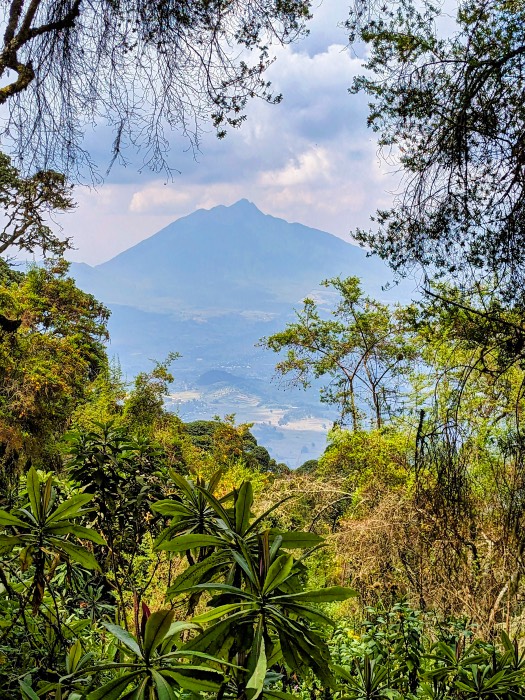
- Location: Volcanoes National Park, Northwest Rwanda
- Length: 9.5 km return
- Time: 3 – 4 hours hiking / 5 – 7 hours total
- Elevation: +1025m / – 1025m
- Lowest Altitude: 2,686m
- Highest Altitude: 3,711m
- Season: June to September and December to February
- Gateway City: Ruhengeri (aka Musanze)
- Type: There and Back
- Booking Required: Yes
- Start: Volcanoes National Park Headquarters
- Finish: Volcanoes National Park Headquarters
- Difficulty: Moderate to difficult
- What to expect: Steep uphill sections, dense jungle vegetation, occasional sweeping views of the surroundings (weather permitting) and a chance to glimpse gorillas!
What is Mount Bisoke?
Mount Bisoke is an extinct volcano in the Virunga Mountain chain. Reaching a height of 3,711m and featuring an imposing crater lake, Mount Bisoke makes for a decent day hiking destination and is one of the more popular volcanoes to hike in Rwanda.
Want another epic hike in Rwanda? Check out the Congo Nile Trail
Mount Bisoke Location
Mount Bisoke is located in Volcanoes National Park in the far northwest of Rwanda. The volcano straddles the border of the DRC and Rwanda, although the summit itself lies firmly in Rwanda.
If you’re wondering why the name Volcanoes National Park is ringing a bell, that’s because it’s famous for being the home of Rwanda’s Mountain Gorilla population.
The nearest major town is Ruhengeri, which is also known as Musanze – because, umm, two names are better than one?
Read: How To Go Chimpanzee Trekking for $20
Best Time to Hike Mount Bisoke
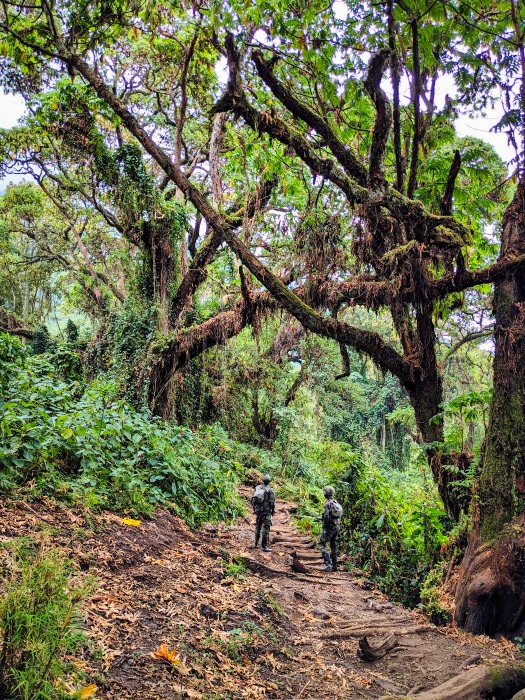
The best time to hike Mount Bisoke is during one of Rwanda’s two dry seasons. The long dry season is from June to September and the short dry season is from December to February. During this time, you have the best chance of clear weather (although rain can always happen!) and the trail will be relatively dry.
To hike Mount Bisoke in the rainy season, you’ll have to be really committed. The trail will be muddy and slippery as hell and there’s very little chance the summit will be anything else than a big wet mess. But if it’s those gorillas you’re after, well, then, they live there all year round.
For more hikes in Africa, read about Fish River Canyon in Namibia
How to Book Mount Bisoke
The Mount Bisoke hike can be booked directly through Volcanoes National Park. Permits must be purchased ahead of time through this link. We believe that up to 30 permits are issued each day, however, we only had 11 people in our group.
We suggest that people book their permits at least one week in advance in order to secure their desired dates.
You can pay for your online booking with a credit card. However, if like us, your card is blocked online in foreign countries, we recommend using a Wise card. It’s what we do and it’s never let us down.
Of course, you can always arrange a hike to Mount Bisoke as part of a tour and there are many on offer!
Note: despite what the website says, you no longer need a COVID test to do any activity in Volcanoes National Park, including Mount Bisoke.
How to get to Mount Bisoke
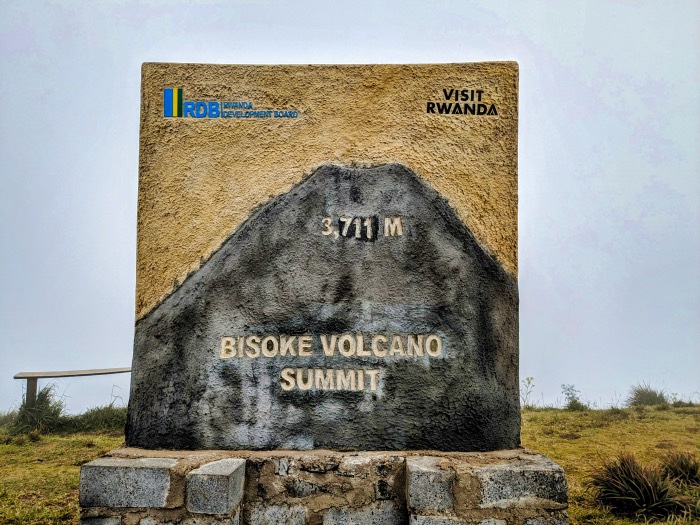
To get to Mount Bisoke, you must first get to Ruhengeri (aka Musanze).
It’s pretty easy to get to Ruhengeri from most places in Rwanda.
From Kigali, frequent buses to Ruhengeri depart from the main bus station in Nyabugogo. Each bus company has their own office, just look out for the signs that say “Kigali-Musanze.” The journey should take around 2 hours.
From Gisenyi, buses that are bound for Kigali pass through Ruhengeri.
If you’d like to book in advance, check fares here.
Once you’ve reached Ruhengeri, you’ll need to take a moto-taxi to Volcanoes National Park headquarters (where you’ll meet the team on the day).
Transportation to the Mount Bisoke Trailhead
Note: this is a bit of an odd system
All hikers must meet at the Volcanoes National Park headquarters and 7 a.m. on the day of the hike. After a short briefing, everyone is expected to make their own way to the Mount Bisoke parking lot (where the trailhead is located). This is located a 30-minute drive away from Volcanoes National Park headquarters on a bumpy road which is only suitable for solid 4x4s.
None of this information was communicated to us ahead of time, so you should expect the same.
If you don’t have a car, or don’t have a 4WD car, you’ll have to try to squeeze in with someone in your group. You should be able to find a lift (especially if you’re single). From our group, 3 people didn’t have proper cars (out of a total of 11) and they all managed to find a lift.
How much does it cost to hike Mount Bisoke?
A permit to hike Mount Bisoke costs $75 USD per person. Coming from anywhere else in the world, this is a very expensive day hike. Welcome to East Africa!
10% of the permit fee goes to surrounding villages, ensuring that the communities are benefiting from Rwanda’s increased tourism. On that note, in this part of Rwanda, we experienced a lot of begging and requests for money. Please do not give money to anyone as this only encourages this bad habit and leads to dependency. If you would like to contribute further, there are many excellent charities that are worthy of a donation.
Prices drop if you are either a Rwandan citizen, a foreign resident in Rwanda or an East African resident.
Some hikers also choose to tip their guide a few dollars at the end of the day too.
Mount Bisoke: The Trail
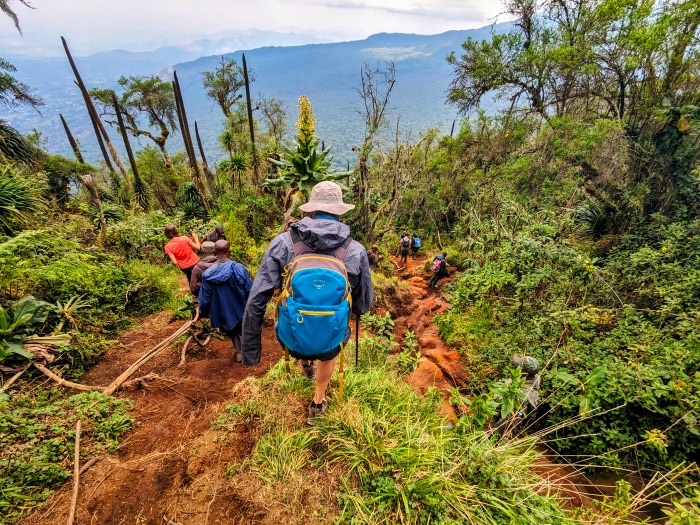
Mount Bisoke is a there-and-back 9.5 km trail to the summit of the volcano. The trail starts in the Mount Bisoke parking lot and begins with a gentle wander through lush farmland at the foothills of the volcano.
After about a kilometre, hikers make their way to the steep slopes and thick vegetation of the Volcano’s National Park boundary. This is where the fun begins!
Once inside the park, groups are met with armed guards who are assigned to protect them from aggressive buffalo.
From here, the trail begins its steep 3.75 km ascent to the summit of Mount Bisoke. Along the way, hikers can expect dense jungle passes, narrow trails, steep muddy sections and encounters with antelope, buffalo and potentially mountain gorillas. There are a few flat spots to rest along the way and to take in views of the sounding farmland and nearby volcanoes.
After 1.5 to 2.5 hours of pushing, the summit (3,711m) is a welcoming sight. From the summit, hikers are treated to views of Mount Bisoke’s crater lake, DRC’s Virunga National Park and several other sounding volcanoes – weather-dependent.
After a break for lunch, it’s time to make your way back down the mountain.
How difficult is the Mount Bisoke hike?
As always, this depends on your experience. We found it moderate, but others in our group found it very hard. The trail can be very steep, slippery and muddy and there is a lot of elevation to gain and lose over a short distance.
Also, you need to be really careful with your footing. This is where hiking poles can come in handy. It’s also possible to hire a porter ($10 pp) to assist with the challenging sections.
What to expect at Mount Bisoke
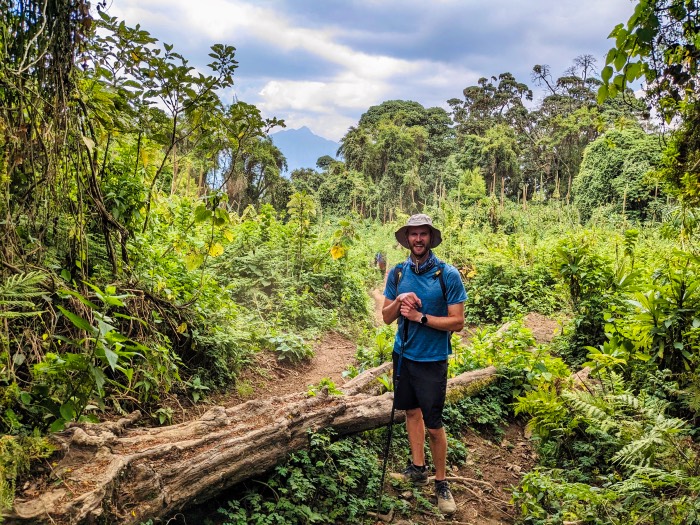
All hikers must meet at Volcanoes National Park headquarters at 7 a.m. on the morning of the hike. It will likely be bustling, with a lot of different groups for different activities milling around the grounds.
Upon arrival, you must go to the office to check in and provide a copy of your passport (they can make a copy for you on the spot). You’ll need to provide your booking confirmation – a screenshot of the confirmation is okay.
After checking in, take the opportunity to use the toilet, get your supplies in order or grab a coffee from the cafe. After 15 minutes or so, groups will start to meet for their briefing. Note that all park activities meet at this time, so you must locate the correct group. Just ask around if you’re unsure.
During the briefing, you’ll meet your group leader who will give you a quick overview of what to expect for the day and make sure that everyone has transportation to the start of the hike.
Next everyone will drive in a convoy to the Mount Bisoke parking lot. Once again, this is a 30-minute drive on a bumpy road.
Once you arrive at the Mount Bisoke parking lot, you’ll have an opportunity to use the toilet and buy any last-minute supplies you might need.
Porters
When you reach the Mount Bisoke parking lot, there will be porters waiting. It’s completely up to you whether you want to hire a porter. If you would like to hire a porter, they cost a minimum of $10 USD.
Please note that even if you don’t opt for a porter, extra porters will still accompany you along the hike and try to solicit a sale en route. We had one porter in particular who quite aggressively kept insisting on trying to assist us despite clearly telling him multiple times that we didn’t require any help. We’d heard about this happening in the past only to have the porter demand payment at the end of the hike.
Moral of the story: don’t be afraid to clearly state and (repeat if need be), “no thank you, I don’t need a porter”.
Food
All hikers are expected to arrange their own food and water for the duration of the hike.
For lunches, we suggest peanut butter and jam sandwiches, hardboiled eggs and tuna.
For snacks, we suggest dried fruit, nuts and biscuits. These are all great options that can be easily found in Rwanda.
Water
Water isn’t accessible along the trail so ensure that you depart the hike with at least 2L per person. Carrying it in a water bladder is by far the most comfortable option.
As a backup, water can be purchased at the Mount Bisoke parking lot.
Weather

The weather can be quite warm at the base of Mount Bisoke, but as the summit is 3,711m, it gets cold on the top. Make sure you pack some warm layers, such as a fleece and beanie to keep you warm at the summit.
Rain clouds can move in quickly, so much so you check the forecast ahead of time and always pack a raincoat just in case.
Rubbish
As usual, leave no trace and bring a little bag to collect your rubbish.
Safety
Overall, Mount Bisoke is a very safe hike. As mentioned, there are some territorial buffalo, however, with several armed guards escorting your way, there is little to worry about.
The biggest safety issues would be the heat, sun exposure and dehydration. Be sure to cover up from the sun and stay as hydrated as possible.
The other risk is of course injury. Always pack a well-stocked first aid kit in case anything goes wrong.
Travel insurance, as always, is essential. If something goes wrong, you want to be covered. We use and recommend SafetyWing. Trust us, we’ve used a lot of travel insurance and they really are the best.
Gorillas on Mount Bisoke
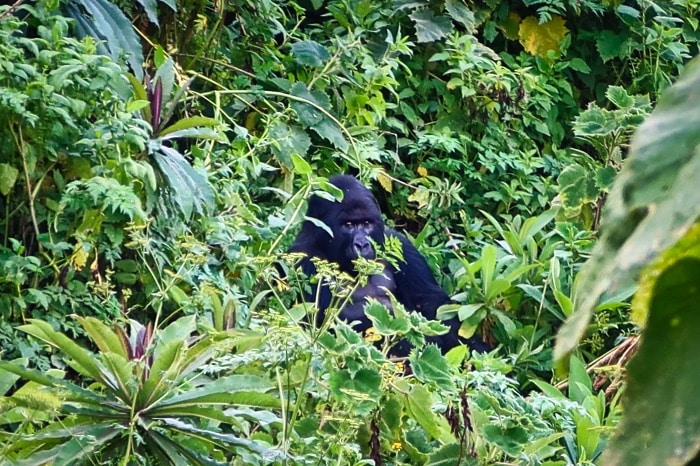
Let’s address the elephant (or maybe, gorilla..?) in the room. There is a very healthy gorilla population that lives on the slopes of Mount Bisoke and it’s not unheard of for hikers to see them. This is in fact why we chose to hike Mount Bisoke.
Now, we have no idea of the odds or percentages here, but we reckon they’re okay. Many people we met have seen them en route and so did we. For us, the odds seemed high enough to be worth the gamble.
For us, the gamble paid off. We saw a family of gorillas on our descent. We got to spend about 15 minutes observing the gorillas (including a giant silverback!) who were hanging out about 20 meters from the trail. It was a very cool experience!
If you DO see gorillas you’re supposed to only get 10 minutes and you’re technically not allowed to take photos. (This is actually in the Mount Bisoke permit). In our experience, this wasn’t strictly enforced. Again, all experiences will be different and not only is a gorilla sighting not guaranteed, but neither is a photo opportunity.
Read more about our gorilla experience on Mount Bisoke
How good is the hike up Mount Bisoke?
Strictly as a hike, we found Mount Bisoke to be good but not great. The crater lake is nice to see and there are good views from the summit (weather dependent) but it’s unlikely to blow your mind. So at an expensive $75 USD, is Mount Bisoke worth it?
Overall though, yes, it is worth it. Why? This is because there is a chance to see frikken gorillas (see above) – which usually costs $1500 USD, so why not take the chance?
Packing List for Mount Bisoke
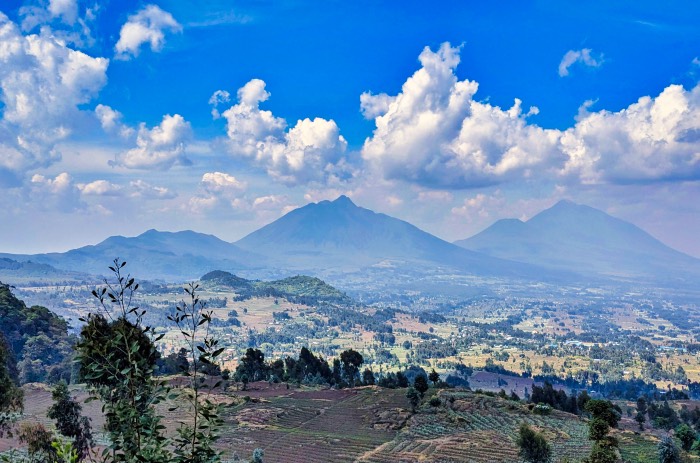
What to Wear
It’s cold up at the summit, plus the trail is muddy, so you’ll want to wear the right clothes. We recommend the following:
What to Bring
Where to Stay Near Mount Bisoke
Budget
Kinigi Asoferwa Lodge
This lodge is a popular spot for camping (in the parking lot). At $ 10 USD pp (negotiable), it’s a good option as the views are nice and it’s a 5-minute walk to Volcanoes National Park headquarters. We don’t recommend getting a room here though.
Mid-range
This is the favourite amongst Rwanda’s expats, with clean and affordable rooms.
High-end
Disclaimer: This post contains affiliate links. This means that if you buy or book anything through them, we’ll earn a small commission at no extra cost to you. This helps us run this website and create comprehensive guides to help you get off the beaten track. We only recommend products and/or services that we use ourselves and trust.

